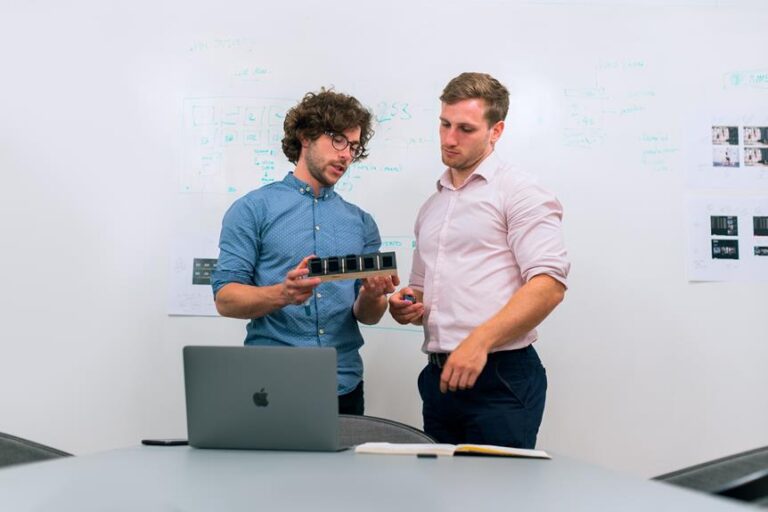DIY Delta 3D Printers: Unlocking High-Speed Printing
Unleash the untapped potential of high-speed printing with DIY Delta 3D printers. These innovative machines, with their unique and intricate design, offer a gateway to precise and efficient printing.
In this article, we delve into the fundamentals of DIY Delta 3D printers, guiding you through the selection of components, calibration techniques, and troubleshooting tips.
With our expert insights and practical advice, you'll discover the key to unlocking unparalleled speed and performance in your 3D printing endeavors.
Key Takeaways
- Delta printers have a unique geometry and design separate from Cartesian printers, with a stationary build platform and three vertical towers with movable arms.
- The design of delta printers allows for high-speed printing and greater accuracy, making them ideal for applications that require intricate details and complex geometries.
- Delta printers offer fast print speeds and are suitable for large-scale manufacturing, making them efficient and productive.
- DIY enthusiasts appreciate the simplified assembly process of delta printers, which have a unique design enabling precise and coordinated movement of the print head.
The Basics of DIY Delta 3D Printers
One of the key aspects to understand about DIY Delta 3D printers is their unique geometry and design, which sets them apart from traditional Cartesian 3D printers. Unlike Cartesian printers that utilize a moving bed and a stationary print head, delta printers have a stationary build platform and three vertical towers with movable arms that control the movement of the print head. This design allows for high-speed printing and greater accuracy, making delta printers well-suited for applications that require intricate details and complex geometries.
DIY delta 3D printers are known for their fast print speeds, thanks to the parallel movement of the three arms. The arms work together to move the print head simultaneously, resulting in rapid and continuous printing. This makes delta printing ideal for large-scale manufacturing or projects that require quick turnaround times.
Furthermore, the geometry of delta printers enables them to have a larger build volume compared to their Cartesian counterparts. This means that users can print larger objects without the need for multiple prints and subsequent assembly. The delta design also reduces the weight of the moving parts, allowing for higher accelerations and faster movements.
Understanding the unique design of delta printers is essential for users who want to harness the benefits of high-speed printing and maximize the capabilities of their DIY delta 3D printers.
Understanding the Unique Design of Delta Printers
Delta printers are known for their efficiency in high-speed printing, thanks to their unique design. Unlike Cartesian printers, which use a gantry system, Delta printers utilize three vertical arms connected to a moving platform. This design allows for faster and smoother movements, resulting in quicker print times and improved overall performance.
Additionally, the simplified assembly process of Delta printers makes them a popular choice among DIY enthusiasts looking to build their own 3D printers.
Efficiency of Delta Printers
The unique design of delta printers enables them to optimize printing efficiency through precise and coordinated movement of the print head. Unlike traditional Cartesian printers, delta printers use three arms to control the position of the print head in a three-dimensional space.
This configuration allows for faster and smoother movements, resulting in higher printing speeds and improved overall efficiency. By utilizing parallel kinematics, delta printers can achieve rapid accelerations and decelerations, reducing the time required to move the print head between different areas of the print bed.
Furthermore, the lightweight design of delta printers minimizes inertia, enabling quick and accurate positioning of the print head. This efficiency in movement translates to faster print times and increased productivity.
As we move forward, let's explore the simplified assembly process of DIY delta 3D printers.
Simplified Assembly Process
To ensure a smooth and efficient construction process, it is imperative to carefully follow the step-by-step instructions and consistently check for proper alignment of components.
The simplified assembly process of Delta 3D printers involves a unique design that allows for faster and more precise printing. Here are four key aspects to consider during the assembly:
- Frame Construction: Begin by assembling the frame using high-quality, sturdy materials to ensure stability and durability.
- Tower and Effector Assembly: Pay close attention to the alignment of the towers and the effector, as any misalignment could lead to printing inaccuracies.
- Calibration: Properly calibrate the printer by adjusting the endstops, belts, and pulleys to achieve optimal performance.
- Wiring: Organize and secure the wiring to prevent any interference or tangling during printing.
Advantages of DIY Delta 3D Printers
One significant benefit of DIY delta 3D printers is their enhanced precision, allowing for the production of intricate and detailed prints. Unlike traditional Cartesian printers, which use a moving gantry system, delta printers utilize three vertical arms connected to a common carriage that holds the extruder. This design enables the printer to achieve high speeds and accuracy, resulting in superior print quality.
The delta mechanism relies on a series of mathematical calculations to control the movement of the arms. This level of precision ensures that each layer of the print is accurately placed, resulting in smooth surfaces and intricate details. The parallel movement of the three arms also reduces the risk of distortion or warping during printing, further enhancing the overall quality of the printed object.
Another advantage of DIY delta printers is their compact and lightweight design. The vertical arm configuration allows for a smaller footprint, making them ideal for environments with limited space. Additionally, the reduced weight of the moving components enables faster acceleration and deceleration, resulting in shorter print times.
Furthermore, DIY delta printers offer a higher level of customization and flexibility compared to pre-assembled printers. Users have the freedom to choose their own components, such as extruders, hot ends, and control boards, allowing for a tailored printing experience that meets their specific needs and preferences.
Choosing the Right Components for High-Speed Printing
When it comes to achieving high-speed printing with DIY Delta 3D printers, choosing the right components is crucial.
Key component considerations include the printer frame, the effector, the hot end, and the firmware.
Each of these components plays a vital role in determining the printer's ability to achieve optimal print speed.
Key Component Considerations
Optimizing the speed of 3D printing requires carefully selecting and integrating components that can consistently and reliably operate at high frequencies. When choosing components for high-speed printing, there are several key considerations to keep in mind:
- Print Head: The print head is a crucial component that directly affects the speed of printing. Look for a lightweight and precise print head that can move quickly and accurately.
- Motor: The motor is responsible for moving the print head and other parts of the printer. Choose a high-speed motor with sufficient torque to ensure smooth and fast movement.
- Controller Board: The controller board is the brain of the printer and controls the movement and operation of all components. Opt for a controller board that supports high-speed printing and has advanced features for precise control.
- Power Supply: To support high-speed printing, a stable and powerful power supply is essential. Select a power supply that can provide sufficient voltage and current to meet the demands of high-speed printing.
Achieving Optimal Print Speed
To achieve optimal print speed in high-speed 3D printing, it is crucial to carefully select the right components that can handle the demands of rapid and accurate printing. The choice of components can significantly impact the overall performance and speed of the printer. Here are some key components to consider when aiming for high-speed printing:
| Component | Importance | Considerations |
|---|---|---|
| Extruder | High | Look for a lightweight extruder with a fast filament feeding mechanism to ensure quick and precise material deposition. |
| Hotend | Medium | Opt for a hotend with a high-temperature capability and efficient heat dissipation to prevent clogs and maintain consistent extrusion. |
| Motion System | High | Choose a high-quality linear motion system with low friction and high precision, such as linear rails or high-quality bearings, to enable smooth and accurate movements. |
| Electronics | High | Select a powerful microcontroller and stepper motor drivers capable of handling high-speed movements and processing complex print commands efficiently. |
Calibrating Your Delta Printer for Precise Prints
One crucial step in achieving accurate prints with your delta printer is ensuring that it is properly calibrated. Calibration is the process of fine-tuning your printer to ensure that it is operating at its optimal performance level.
Here are four important aspects to consider when calibrating your delta printer:
- Endstop Calibration: The endstops are the sensors that determine the position of each printing head. Properly calibrating these sensors ensures that the printer can accurately locate the home position and prevent any misalignment during the printing process.
- Tower Calibration: Delta printers rely on three vertical towers to move the printing head. It is important to calibrate these towers to ensure that they are perfectly perpendicular to the build plate. This calibration ensures that the printer can accurately position the head in all directions and maintain precise prints.
- Delta Radius Calibration: The delta radius refers to the distance between the center of the delta printer and each tower. Calibrating this distance is crucial for achieving accurate prints, as it determines the printer's geometry. A misaligned delta radius can result in distorted prints.
- Bed Leveling: Ensuring that the build plate is perfectly leveled is essential for accurate prints. Calibrating the bed involves adjusting the height of each corner to make sure that the print surface is parallel to the printer's movement. This calibration prevents any adhesion issues and ensures consistent print quality.
Tips for Optimizing Print Speed on Delta Printers
When looking to maximize print speed on your delta printer, it is important to consider several tips and techniques that can help improve efficiency and reduce printing time.
One of the first things to consider is the layer height. By using a larger layer height, you can significantly decrease the printing time. However, it is crucial to find the right balance between speed and print quality, as a larger layer height may result in a loss of fine details.
Another tip is to optimize the print settings, such as adjusting the print speed, acceleration, and jerk settings. Increasing the print speed can help to reduce the overall print time, but it is essential to ensure that the printer can handle the increased speed without compromising the print quality.
Additionally, enabling features like 'coasting' and 'avoid crossing perimeters' can further optimize print speed.
Finally, using a more powerful and efficient slicing software can also contribute to faster printing.
Troubleshooting Common Issues With Delta Printers
Addressing common issues that may arise with delta printers is essential for ensuring smooth and efficient printing processes. While delta printers offer high-speed printing capabilities, they can encounter certain problems that hinder their performance. Here are four common issues that users may face with delta printers and the troubleshooting steps to resolve them:
- Inaccurate prints: If your prints are not coming out as expected or are misaligned, check the calibration of the printer. Ensure that the printer's arms and towers are properly calibrated and leveled. Adjust the delta printer's endstops if necessary.
- Skipping or slipping belts: If you notice that the printer's belts are skipping or slipping, it can result in print defects. Inspect the belts for any signs of wear or damage. Tighten loose belts and ensure proper tension. Lubricate the belts and pulleys to reduce friction.
- Extrusion issues: If the printer is not extruding the filament properly, it can lead to incomplete or weak prints. Check the extruder assembly for any obstructions or clogs. Clean or replace the nozzle if necessary. Adjust the extrusion temperature and speed settings to ensure proper flow.
- Z-axis wobbling: If you observe wobbling or inconsistent movement in the Z-axis, it can affect the overall print quality. Check the stability of the printer's Z-axis components, including the rods, bearings, and motor. Tighten any loose connections and ensure proper alignment.
Upgrading Your DIY Delta Printer for Enhanced Performance
Enhance the performance of your DIY Delta printer by upgrading its components and implementing advanced features. By making these upgrades, you can achieve higher print quality, faster print speeds, and increased reliability. Here are some key components and features to consider upgrading:
| Component/Feature | Upgraded Version |
|---|---|
| Hotend | All-metal hotend |
| Extruder | Direct drive extruder |
| Heatbed | Silicone heatbed |
| Stepper Motors | Higher torque motors |
| Electronics Board | 32-bit controller board |
Upgrading to an all-metal hotend allows for printing with a wider range of materials, including high-temperature filaments. A direct drive extruder provides better filament control and reduces the chances of filament slipping. A silicone heatbed ensures more even heating and minimizes warping of prints. Higher torque stepper motors offer improved precision and smoother movements. Finally, a 32-bit controller board enables faster processing and smoother operation.
Showcase of Impressive Prints Achieved With Delta 3D Printers
Featuring stunning details and impeccable precision, delta 3D printers have produced an array of impressive prints that showcase the capabilities of these advanced machines. With their unique design and high-speed capabilities, delta printers have become increasingly popular among enthusiasts and professionals alike.
Here are four examples of the remarkable prints achieved with delta 3D printers:
- Intricate Architectural Models: Delta printers excel at producing intricate and complex models with fine details. Architects and designers have utilized the precision of these printers to create stunning architectural models that accurately depict every intricate feature of their designs.
- Artistic Sculptures: Delta printers have been utilized to create breathtaking sculptures with intricate details and smooth surfaces. Artists are able to bring their creative visions to life with the precision and high-resolution capabilities of these machines.
- Functional Prototypes: Delta printers are not limited to producing aesthetically pleasing prints. They are also capable of creating functional prototypes with precise dimensions and intricate moving parts. This makes them invaluable in industries such as engineering and product design.
- Customized Jewelry: The high level of precision and intricate details achieved by delta printers have made them a popular choice for creating customized jewelry pieces. From intricate pendants to delicate rings, these printers can produce stunning pieces that are unique to each individual.
The impressive prints achieved with delta 3D printers demonstrate the immense potential of these machines in various industries and creative endeavors. Whether it's for architectural models, artistic creations, functional prototypes, or customized jewelry, delta printers continue to push the boundaries of what is possible in the world of 3D printing.
Frequently Asked Questions
How Much Does a DIY Delta 3D Printer Typically Cost to Build?
The cost of building a DIY Delta 3D printer varies depending on factors such as the quality of components, desired features, and customization. However, on average, it typically ranges from a few hundred to a few thousand dollars.
What Software Is Recommended for Controlling and Operating a DIY Delta 3D Printer?
For controlling and operating a DIY Delta 3D printer, it is recommended to use software that offers features like slicing, modeling, and G-code generation, such as Ultimaker Cura, Simplify3D, or PrusaSlicer. These software options provide a user-friendly interface and compatibility with various printer models.
Are DIY Delta 3D Printers Suitable for Beginners or Are They More Advanced Machines?
DIY Delta 3D printers offer high-speed printing capabilities, making them suitable for advanced users who desire efficient and precise results. These machines require technical knowledge and experience to operate effectively, making them less suitable for beginners.
What Are the Main Differences Between a Delta 3D Printer and a Cartesian 3D Printer?
The main differences between a delta 3D printer and a Cartesian 3D printer lie in their design and motion systems. While Cartesian printers use a rectangular coordinate system, delta printers employ a parallel arm mechanism, enabling faster and more precise printing.
Can a DIY Delta 3D Printer Be Used for Printing With Different Materials, Such as Flexible Filaments or Metal Filaments?
Yes, a DIY Delta 3D printer can be used for printing with different materials, including flexible filaments and metal filaments. This capability allows for a broader range of applications and enhances the versatility of the printer.
Conclusion
In conclusion, DIY Delta 3D printers offer an exciting opportunity for high-speed printing in the world of additive manufacturing. Their unique design and precise calibration allow for impressive prints to be achieved.
By carefully choosing the right components and optimizing print speed, users can unlock the full potential of their Delta printers. Troubleshooting common issues and upgrading for enhanced performance are also important considerations.
With the right knowledge and techniques, DIY Delta 3D printers can revolutionize the way we create three-dimensional objects.









